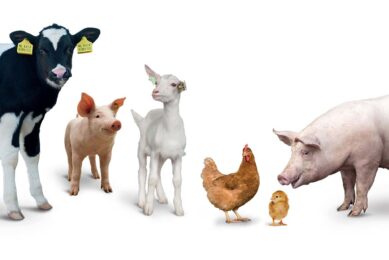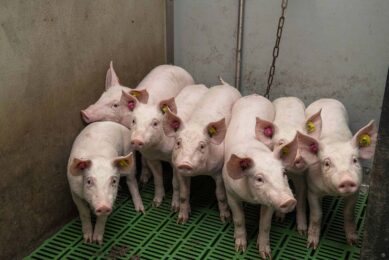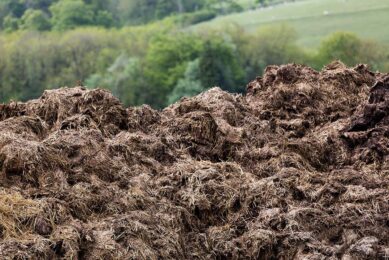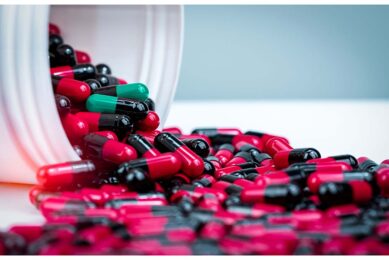Boosting the immune system naturally

The last international symposium on ‘Alternatives to Antibiotics’ provided the industry with evidence that a reduction in antibiotic usage in farm animals is achievable – the dairy industry is already working towards this.
ANTIBIOTIC REDUCTION SPECIAL 2023 – read all articles
Upholding high welfare standards, responsible use of antibiotics, and precision feeding models with a farm-by-farm approach are some key farm management practises that can be used to help keep diseases under control and limit the use of veterinary pharmaceuticals.
The immune system (IM) separate from the Innate (IIM) and the Adaptive (AIM) synergistically accomplishes its task, to protect cows from several pathogens, including viruses, bacteria, and parasites.
The IIM is the first barrier to any initial tissue damage followed by activity by the AIM, distinguished from an antigen-specific response to infectious pathogens and triggered only if the IIM fails to compact the affronting pathogens. AIM activity is also dependent on repeated exposure to same pathogens. IIM cells are mainly macrophages and dendritic cells which, through phagocytosis, kill several bacteria. Dendritic cells are the ones triggering AIM and can be characterised as the bonding cells between IIM and AIM. AIM main cells are B-Lymphocytes (responsible for the antibody specific Ig- immunoglobulins) and T- Lymphocytes (responsible for antigen specific cytokines). The mucosal IIM acts as both a physical and an immunological barrier while playing a key role in the sensing and eliminating of pathogens and toxins insert from feed but also in the symbiosis development between gut microbiota and the host. The intestinal mucosal barrier provides a direct effect of pro-inflammatory cytokines that are synthesised by three different cellular sources: Epithelial gut cells (Interleukin-1β), Innate immune cells (Tumour necrosis factor-α), and Adaptive immune cells (Interferon-γ). Interleukin-18 (IL-1β) is produced by epithelial gut cells following inflammasome activation and induces the production of Tumour necrosis factor-α (TNFα) and Interferon-γ (IFNγ). It also acts as an autocrine-paracrine signal influencing intestinal goblet cell development, and inhibition of IL-1β signalling reducing mucus production and inducing resultant mucosal damage. TNFα is a potent pro-inflammatory cytokine primarily produced by activated macrophages. IFNγ is produced by T-lymphocytes to aid in the AIM response. High levels of plasma TNFα and/or IFNγ have been recorded in multiple bovine inflammatory disorders such as metritis, acidosis, heat stress, impaired feed intake and ketosis. Inflammatory cytokine treatment, specifically TNFα or IFNγ, increases the barrier permeability and junctional tortuosity and disrupts epithelial cell cycle.
Inflammation consists of a complex biological response of IIM. The purpose of host inflammatory responses is to eliminate the source of tissue trauma, restore immune homeostasis, and return tissues to normal function. The inflammatory cascade results in the escalation of local antimicrobial factors but also in the increasing movement of leukocytes and plasma components from the blood into infected tissues. A very common biological complexity example for high yielding dairy cows, is inflammation to the mammary gland (mastitis). Beyond its direct effect to udder tissue, experimental studies indicated that endotoxins could reduce fertility, and several observational studies followed recognised that the occurrence of clinical mastitis caused by both gram-negative and gram-positive pathogens resulted in reduced conception rates and increased days to conception. Another one is when rumen acidosis linked with increased inflammatory response and laminitis. Reduced rumen pH is associated with an accumulation of liposaccharide-LPS in the rumen due to the lysis of gram-negative bacteria, which elicit an inflammatory response. Although this inflammation mechanism could play a role in laminitis, it is likely that there are other mechanisms by which ruminal acidosis more specifically causes laminitis, as hypoperfusion, resulting in ischemia in the digit because of endotoxins released in the rumen that reach the blood stream.
High yielding dairy cows
Dairy cattle, especially high yielding dairy cows, are susceptible to increased incidence and severity of both metabolic and infectious diseases during the periparturient period, meaning three weeks before (close-up period) and 3 weeks after calving (fresh cow), known as the transition period.
During the transition period, cows experience physiological and endocrine adaptations leading to lower dry matter intake as a result of low appetite stimulated by hormones and in most of the cases from negative energy balance threshold regulated mainly by adipose tissue catabolism. In parallel, rumen absorbability changes due to osmotic alterations and rumen mobility impaired due to mechanical pressures of the last days of foetus development also increasing the overall nutrient demands. This contrast phase depresses a cow’s IM functions and it can also be characterised by the occurrence of an inflammatory response with both positive (APP+) and negative (APP−) acute phase proteins. Almost all cows in the herd, during the transition period are under systemic stress and inflammation, mainly because of these alterations of their immune mechanisms. Inability to control systemic inflammation remains the major factor among key economically important metabolic diseases (of subclinical and clinical forms) including mastitis, lameness, acidosis, retained placenta, metritis, displaced abomasum, ketosis, hypocalcaemia, udder oedema, and of course other bacterial infectious diseases. Early diagnosis with predictive laboratory parameters together with precise transition cow management and feeding strategies are the most helpful preventive measurements as research well describes. Direct treatment costs between €150 – 650 per case depending on the level and multiplication of metabolic diseases.
Natural nutritional immune boosters
Proper combination of dynamic nutrients including vitamins, macro and micronutrients, natural antibacterial peptides, biological response modifiers, pre and probiotics can develop gut microbiome and strengthen naturally the cow`s immune system
Nutritionally, there is a direct connection between feed energy to protein ratio, calcium to phosphorus to magnesium ratio imbalances and low supplementation of vitamin A, C and D3 together with higher use of antioxidants mainly β-carotene, selenium, vitamin E and phytoextracts i.e., Echinacea purpurea. The important antioxidant role of vitamin E and selenium as well as maintaining udder health and low Somatic Cell Count (European Union limit of 400,000 cells/mL) are well known for years, though studies show evidence contributed to both dietary modification but also control of neutrophil functions. Selenium affects the IIM and the AIM response of the mammary gland through humoral and cellular activities. There is a significant reduction in the incidence of mastitis in dairy cows after they were supplemented with selenium and vitamin E. Research also shows that feeding selenium-yeast supplements to cows during the close-up period improves antioxidant status and IIM post calving. B- and T- lymphocytes activity, thus the production of antibody specific immunoglobulins and antigen specific cytokines, is positively influenced by energy, protein and high bioavailability ions such as iron, copper, zinc, selenium, manganese and vitamins A, C, D3 and E. Combining vitamin A with β-carotene also showed to reduce mastitis cases in fresh cows. Zinc is also a mineral to pay attention to when it comes to mastitis prevention. Not all minerals are the same however, mainly due to their bioavailability status throughout the gastrointestinal tract, even when comparing same formats i.e., chelated forms from different commercial brands. Zinc is often found in numerous metalloenzymes having significant effect in cellular growth and reduction of SCC. Zinc but also manganese together, co-factoring multiple enzymatic functions. Most critical is the need for manganese ions by Superoxide-Dismutase (SOD) to break down the toxic superoxide (ROS) into water and hydrogen peroxide to maintain cell survival. Coated zinc ions nanoparticles, inhibit pathogenic bacteria and protect intestinal mucosal by enriching microbiota and enhancing transmembrane proteins associated with barrier function. Oxylipids are another group of important immune signalling molecules that are derived from cellular lipids and contribute to IIM by regulating the onset, magnitude, and duration of the inflammatory response. Oxylipids are synthesised from PUFA substrates primarily found in the cellular membrane, including the linoleic acid (omega-6) and arachidonic acid (omega-6) or the eicosapentaenoic acid – EPA (omega-3) and docosahexaenoic acid – DHA (omega-3).
Pre- and probiotics can also be a direct immune boost knowing that they can recover symbiosis and fermentative phenomena both in rumen and gut environment.
Conclusion
Dairy farms high in productivity level in combination with poor management often experience multifactorial metabolic and infectious diseases resulting to the increase use of veterinary treatments. The European Medicines Agency (ECDC/EMEA, 2009), stressed the discrepancy between the increasing occurrence of multidrug resistant bacteria within Europe while in parallel the poor industry development of antibiotic drugs to treat infections by such bacteria. Antibiotic control in cattle farms can be effectively reduced by a combined scheme based on 2 main parameters.
- On time clinical farm inspections and the use of predictive laboratory tests by consultant vets.
- Assessment of animal welfare practices to meet industry minimum standards together with precision feeding application per farm basis by consultant nutritionists and/or industry experts and farm owners.
These can provide a greater financial impact on the farms as standalone enterprises therefore application of such practices on a country-by-country basis may control agricultural macroeconomy and environmental emissions in the long run.
References are available on request.
 Beheer
Beheer





 WP Admin
WP Admin  Bewerk bericht
Bewerk bericht